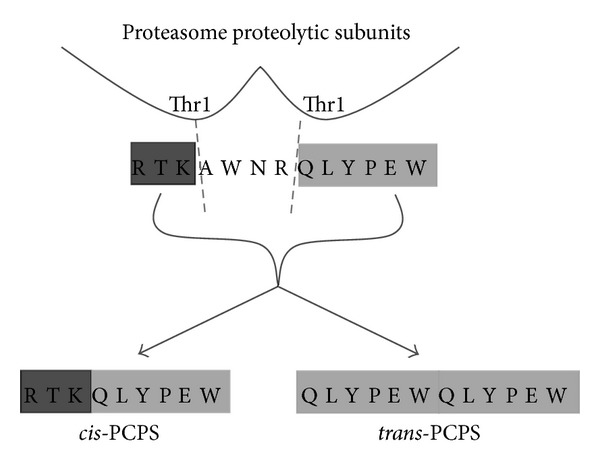Figure 2.

Proteasome-catalyzed peptide splicing (PCPS). PCPS can occur by ligation of two fragments of the same substrate molecule (cis-PCPS) or derived from two distinct protein molecules (trans-PCPS). Shown here are the representative cleavages (depicted by dotted lines) of the peptide gp10040–52 (sequence: RTKAWNRQLYPEW) by two distinct proteasome catalytic subunits, which generate the fragments RTK, AWNR, and QLYPEW. According to the PCPS model [44, 47], the protein is first cleaved by the active site residue Thr1 of the proteasome proteolytic subunits, thereby producing a protein fragment. The latter peptide stays attached to the catalytic centre where, subsequently, it is ligated to a second peptide generating the proteasome-generated spliced peptide.
